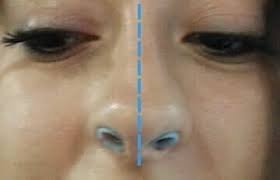
Can a Deviated Septum Be Corrected Without Surgery? What You Need to Know
A deviated septum can cause persistent discomfort and affect daily activities. It can lead to nasal congestion, breathing difficulties, snoring, and recurrent sinus infections. Exploring the non-surgical options can help you understand your options and when to seek guidance on when surgery might become necessary.
What Is a Deviated Septum?
The nasal septum is the thin cartilage and bone structure that separates the two sides of the nose. A deviated septum occurs when this structure is not in an ideal position, shifting more to one side than the other. While many people have a slightly off-center septum, a significant deviation can restrict airflow and lead to discomfort. Chronic nasal blockage, sinus problems, or noticeable difficulty breathing through the nose are possible symptoms.
The severity of the condition varies. For some, it causes only mild inconvenience, while others experience symptoms that affect their quality of life, compromising activities like exercise or restful sleep.
What Are Non-Surgical Options?
While surgery, specifically septoplasty, is the definitive method for correcting a deviated septum, there are non-surgical options that might provide temporary relief from symptoms. These approaches don’t fix the physical misalignment of the septum, but help manage its impact on your well-being. Several non-surgical methods to explore:
- Nasal strips or dilators help open nasal passages and promote better airflow, particularly during sleep.
- Decongestants or nasal sprays: Over-the-counter or prescription options may reduce swelling in the nasal tissues, making breathing easier.
- Allergy management: Addressing underlying allergies with antihistamines helps reduce inflammation and nasal congestion.
- Saline rinses or humidifiers moisten nasal passages and reduce dryness or irritation, especially in dry climates.
While these solutions offer relief, they won’t physically align the septum. If symptoms persist or worsen, it may be time to consider other options.
When Should You Seek Surgery?
Surgery becomes a key option when symptoms significantly disrupt everyday activities or when non-surgical methods fail to provide adequate relief. Persistent issues such as chronic nasal congestion, breathing difficulties, or recurring sinus infections may indicate that surgery is needed.
Septoplasty, the procedure to correct a deviated septum, is designed to straighten the septum, creating equal airflow on both sides of the nose. Many individuals who undergo this surgery experience noticeable improvements in their breathing ability. They may also benefit from an overall reduction in sinus-related issues.
It’s helpful to speak with a healthcare professional to evaluate whether surgery is the right option for you. They’ll assess the severity of your symptoms and the degree of deviation to recommend the most effective course of action.
What Can You Expect From Seeing a Specialist?
When the challenges of living with a deviated septum become disruptive, seeking guidance from an otolaryngologist (ENT specialist) is a practical step. During your consultation, the specialist may perform a detailed examination of your nasal passage using tools such as a nasal speculum or endoscope. They’ll also discuss your symptoms, medical history, and potential treatment options.
The specialist will help you understand the benefits and potential risks of surgical versus non-surgical treatments. If you proceed with surgery, you’ll receive a detailed overview of what to expect before, during, and after the procedure.
A Path to Clear Breathing
Living with a deviated septum can be frustrating, but understanding your options for relief is the first step to improving your quality of life. While non-surgical methods may ease symptoms temporarily, surgical correction is often necessary for long-term improvement. Seeking specialized care will provide clarity on how to proceed and what’s best for your specific situation. Schedule a consultation with a medical professional today to explore your options and start your path to easier breathing.
